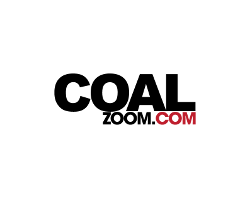Nicholas Cron, Vice President, XCoal, Says There are Opportunities for U.S. Coals in China

January 20, 2021 - “The question is: how long can the U.S. participate in China?” asked Nicholas Cron, Vice President, XCoal, in addressing the WV Mining Symposium, presented by the West Virginia Coal Association on January 12, 2021 in Charleston, WV. “As long as the U.S. can continue to meet these premium coal qualities, from at least an ash and sulfur standpoint, keeping in mind there is a 1 percent sulfur max to coals into China, there are opportunities for U.S. coals to continue to play in the China market.”

Nicholas Cron
China, starting with crude steel production in 2019, was trending sideways with a bit of a manufacturing slump and with a slight decrease in overall global steel production. Obviously, that took a dive in March-April of 2020 on the onset of COVID-19 and became the low point in global activity, significantly impacting both crude steel production as well as demand. When everybody was feeling the low in April, China was already turning out of this COVID low, which was sometime post Chinese New Year. The reason for that was they were able to provide record fiscal stimulus, as well as pulling forward a lot of fixed asset and infrastructure projects, which allowed them to boost their economic recovery. Effectively, China in turn provided somewhat of a stimulus to the rest of the world in terms of much needed cash flow to help those various countries from hitting rock bottom in the steel industry.
Met coke pricing today from a China standpoint is at record levels and that rise in steel production has coincided with a lot of supply side reform that was introduced through the most recent five-year plan within China. While the manufacturing sector was leaned on quite heavily in China to take them out of their COVID lows, at the same time, there was supply side reform that had already been underway in China. There is a significant shortage in coke production in China going into this quarter and it will likely persist into Q2 which will mean that these current coke levels may not exactly stay at these record highs but will continue to be quite strong through the first half of next year.
There has been an aggressive management of coal imports in China starting in May of this year. At that point, there wasn't a specific target on Australian coal as there is today but in general there was an aggressive management of coal imports which forced the domestic coke producers and integrated steel mills in China to the domestic coal market with prices significantly higher than the seaborne alternative. That average in the second half of the year was something like an additional $50 per metric ton.
The Prime Minister of Australia basically made public his interest in the global probe into the origins of the coronavirus. That was supported by the U.S. as well as a lot of prominent European countries, including France and Germany, and that was the culmination point for trade disputes between Australia and China. Since May of 2020 through today, very large vessel queues started to build outside of Chinese ports of predominantly Australian coal. In early October, the Chinese customs authorities allowed 3-4 Australian coking coal cargoes to discharge in China. The perception of the market was that, maybe, there is a resolution and the beginning of the reintroduction of Australian coking coal into China. After that happened there was a holiday period in China, Golden Week, and just coming out of Golden Week, China formally announced that buyers should stay away from Australian coking coal. Then something significant happened which has been beneficial to the U.S. to date, which is the reintroduction of non-Australia premium coals into the China market in a big way. So, with crude steel production very strong, and met coke pricing very strong, China needed those raw materials to continue that strength and maintain current steel margins. They looked to domestic supply and that domestic supply is and was very expensive. There was a shift to ex-Australia markets to try to find an alternative or replacement supply for Australian coal.
That's where U.S. coal pricing just took off with a 66 percent rise in U.S. low-vol coal. Today, pricing is somewhere close to $225 on an FOB ton equivalent basis for domestic coals. The current China market is being driven by U.S. premium coals and by Canadian premium coals. Outside of those two origins there are not many other places that can provide any type of significant tonnage to China. There is a benefit from this pricing in current sales into traditional markets - whether Brazil or Europe, and even a benefit from the impact on domestic pricing in negotiating with domestic buyers using that seaborne alternative outlet as a price comparison there. Certainly, right now China should be thanked for the strong demand and the subsequent impact it's had on FOB pricing. The premium coals within China are less than 1 percent sulfur and U.S. coal is significantly lower in ash and can meet some of these sulfur targets. So as long as the U.S. can continue to beat these premium coal qualities, there are opportunities for U.S. coals to continue to play in the China market.
In reviewing the outlook for U.S. met coal exports in 2021, Cron mentioned a number of tailwinds. China is on track to have record steel production in 2021. The continuation of this Australia/China geopolitical spat will certainly lead to short-term support in pricing and that is a headwind as well. If this trade war is resolved, that will provide some correction to pricing, but the belief is they may not resolve the trade war back to the same point where China was buying coal from Australia in the past. China has always added various import regulations or quality requirements to limit imports into China, whether it was trace elements in January of 2015 or this strict management of imports since 2017 from a volume standpoint. It's likely that something will come along with the resolution that will give China a little bit more control on what coals come into China. So, there still could be a place there for U.S. coals. Another tailwind is that the post-COVID recovery is evident, not just within China but all over the world. It is seen with steel production in Brazil, steel production in auto sales in Europe, in India and in the rest of Asia, so that should continue to lead to demand for coals in general.
The very strong Australian currency should help discipline pricing from a competition standpoint. That's a significant appreciation there which should result in some discipline. Another tailwind is that there is limited availability to increase U.S. met coal in the short-term. This will continue to keep pricing strong. Even if the U.S. was able to increase production compared to current levels, the volume is not so much that it will not allow prices to maintain the current levels. If coal can be mined under 1 percent sulfur, there's a market for it globally and that's likely going to be the case for the balance of the year. It's hard to say how long beyond that.
There are some headwinds. There is a rise in COVID cases, not just in the U.S. but also in Europe, with North Europe having more cases than Southern Europe. That is certainly impacting steel production in North Europe and supporting steel in Italy, for example. Nonetheless, the rise in COVID cases is certainly going to be something to watch. In fact, there's a rise in COVID cases currently happening in the main steel production region in China. That actually has led to support of domestic prices further in China, which in turn leads to support for seaborne coals. So, there's a lot of netting out to do there, but as a result, despite the rise in cases, there is a strong environment for coking coal through the balance of the year.
The uncertainty of coal's role in a Biden Administration is not a short-term impact, and is certainly more medium-longer term, but it's something that some clarity is needed for putting more capital into the mines that continue to produce or produce more tons.
“Overall, we are currently in a market that allows for all coal participation and for the first time ever, America has an advantage over Australia, and certainly in China which is the biggest buyer of coal right now. So, if you have coal, mine it, we'll find a market for it, said Cron. “We're seeing some improvements globally that should allow for that strength to continue through the balance of the year and hopefully for some time beyond 2021.”

